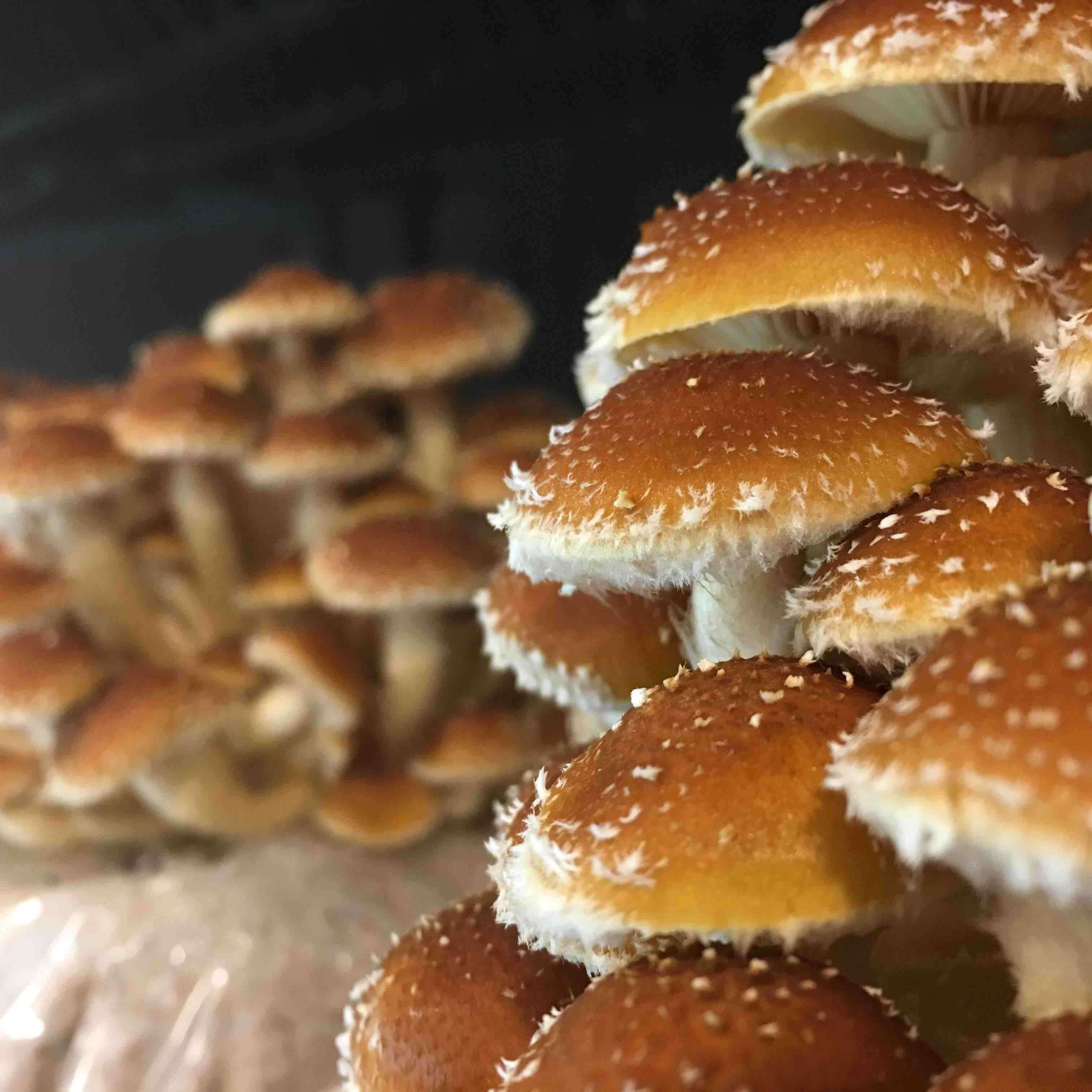
*Your blocks are meant to be opened immediately for best results.
Ready-to-fruit blocks will begin producing mushrooms quickly after
arrival at room temperature, but they can be refrigerated up to 1
month prior to opening.
Chestnut ready-to-fruit blocks are meant to be fruited in a controlled growing room and perform best with ideal temperature (55-65°F) and humidity (70-85%) conditions. Depending on the size and format of your growing space, you may also need to supplement lighting and provide fresh air for proper mushroom formation. Follow the five steps below for fruiting your Chestnut blocks.
Fruiting Chestnut Mushroom Blocks
Setting Up Your Table Top Farm:
1) Select a growing space
The growing area should support conditions ideal for mushroom growing. There are
several factors: 1) Have indirect sun or supplemental lighting (at least 8-12 hours/
day). 2) Temperature control ideally kept in the low 60's (°F). 3) Humidity kept
between 70-85%. 4) Air should not feel stagnant. Shelving or other surfaces are ideal
for organizing blocks, and the space should be kept clean. Controlling all of these
factors will lead to increased mushroom growing success.
2) Setting up your Chestnut blocks
Use a knife to cut a large slash diagonally across the front of the block (you can cut
right through the label). It is ok to cut into the block, it will recover quickly. Fold
the excess top of the bag over, squeeze the remaining air out of the bag, and place the
block cut side up on a shelf (Figure 1). Alternatively, you may make a cut on both
large sides of the block if fruiting space allows.
3) Maintaining and monitoring
Your grow room should be temperature and humidity controlled. If the humidity is
lower than recommended, you should mist the blocks as needed. Chestnut blocks
require monitoring - they can be prone to bacterial and green mold contamination if humidity exceeds 85%, however, if conditions are too dry, they will abort and
stop growing. Clear plastic can be used to form tents over the blocks to create a
humidity chamber. Tiny mushroom pins will begin to develop 12-25 days after
opening (Figure 2).
On occasion, mushrooms will begin developing in the trapped humid space
between the block and the bag (Figure 3). If you notice any mushroom pins
developing underneath the plastic bag, gently cut the plastic open over the small
mushrooms to allow them more growing space (Figure 4).
4) Mushroom harvest and storage
Monitor your chestnut blocks closely as the mushrooms are developing and
harvest when the edges of the caps are still curled down (Figure 5). Overly
mature mushrooms do not store as long. To harvest, simply grab the cluster of
mushrooms, twist, and pull them off the block.
Mushrooms need to be stored in the refrigerator until consumed or sold. Be
cautious not to stack them too deep. A semi-breathable container is ideal for
reducing condensation and excessive wetness that will reduce the shelf life of your
bounty.
5) Second and subsequent crops
Second fruitings can be equally as productive as the first, but depends largely
on the individual block as well as the growing conditions provided. Follow the
directions closely for best results. After harvesting the mushrooms, tape the cut
closed, flip the block over and cut a new slit on the opposite side, and proceed
with Step 3 above. Second fruiting may take up to four weeks. A third fruiting is
also possible - either from existing cuts or a new cut. When your blocks are done
producing, add them to your compost pile.